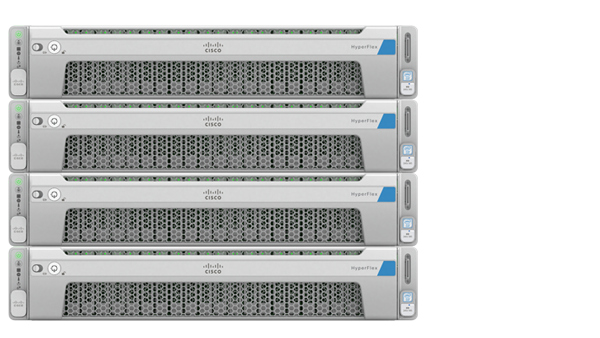Imagine simplifying your entire data center infrastructure into a single, manageable platform. Is that just a dream? Not anymore. In today’s fast-paced digital landscape, businesses are constantly seeking ways to streamline operations, reduce costs, and improve agility.
Cisco Hyperconverged Infrastructure (HCI) offers a compelling solution by converging compute, storage, and networking resources into a single, software-defined system. This integration simplifies IT management, enhances performance, and provides the flexibility needed to adapt to evolving business needs.
But what exactly is Cisco HCI, and how can it benefit your organization? This article will delve into the core components of Cisco Hyperconverged solutions, explore the key advantages they offer, and provide practical insights into how to determine if this technology is the right fit for your business.
Get ready to uncover how Cisco HCI can transform your IT infrastructure and drive tangible results.
Demystifying Cisco Hyperconverged Infrastructure: A Comprehensive Look
Hyperconverged infrastructure (HCI) is reshaping data centers. It brings together computing, storage, and networking into a single, manageable system. Cisco’s solution offers a robust platform for modern applications.
This approach simplifies IT management, reduces costs, and boosts agility. It’s a potent solution for organizations seeking to streamline their operations. Forget complex setups; Cisco HCI provides integrated simplicity.
This architecture enables businesses to scale resources according to needs. Think of it as building blocks; add as you grow. It’s perfectly suited for varied workloads and dynamic demands.
Before diving into specifics, understand that HCI transforms how infrastructure is managed. It breaks down silos, promoting streamlined IT operations. This translates to quicker deployments and fewer headaches.
What is Cisco Hyperconverged Infrastructure?
Cisco’s HCI is more than just a collection of hardware and software. It’s a tightly integrated system designed for seamless operation. It combines compute, storage, and virtualization into a unified platform.
The system utilizes Cisco UCS servers as its foundation, ensuring high performance. Integrated software handles virtualization and management tasks. It’s a complete package, pre-validated and ready to deploy.
It’s designed to simplify day-to-day operations, reducing complexity. Management becomes intuitive, saving time and resources. Automating tasks helps free up IT staff for strategic projects.
Think of it as a pre-built, ready-to-run data center in a box. This streamlined approach makes deployments faster and reduces the risk of errors. Start seeing value almost immediately.
Cisco’s HCI offering is comprised of servers, software and networking to ensure the components function together seamlessly. It is all about efficiency and ease of use.
Key Benefits of Cisco Hyperconverged Infrastructure
The benefits of adopting Cisco HCI are manifold and impactful. Reduced operational expenses rank high on the list. Streamlined management translates to significant savings.
Improved agility is another major plus. Respond quickly to changing business needs by scaling resources on demand. Provisioning new applications becomes remarkably faster.
Enhanced data protection is built into the system. Data replication and automated backups minimize the risk of data loss. Maintain business continuity even during outages.
Simplified management is perhaps the most compelling benefit. A single pane of glass provides visibility and control over the entire infrastructure. Less time managing, more time innovating.
Scalability is a core element; businesses can effortlessly expand computing and storage resources. This pay-as-you-grow model avoids upfront investments. It offers flexibility to evolve.
Components of Cisco Hyperconverged Solutions

Cisco HCI is built around several core components working in harmony. These include Cisco UCS servers, hypervisor software, and storage virtualization. Each plays a crucial role.
Cisco UCS servers provide the processing power. These servers are known for their performance and reliability. They form the backbone of the HCI solution.
The hypervisor, like VMware vSphere or Microsoft Hyper-V, virtualizes the hardware resources. This allows multiple virtual machines to run on a single physical server, efficiently using resources.
Storage virtualization pools the storage resources from multiple servers. This creates a shared storage pool accessible to all virtual machines. Storage is now managed as a single entity.
Management software, such as Cisco Intersight, provides a centralized interface. Monitor and manage all aspects of the HCI environment from one location. Simpler, faster control.
Use Cases for Cisco Hyperconverged Infrastructure
Cisco HCI addresses a wide array of use cases across different industries. From remote offices to enterprise data centers, it provides a solid foundation. Its flexibility is a major advantage.
Virtual desktop infrastructure (VDI) is a perfect application. It delivers desktops and applications to users remotely. Cisco HCI provides the necessary performance and scalability.
Supporting business-critical applications is another common use. These applications demand high availability and reliability. HCI ensures they run smoothly and uninterrupted.
Data center consolidation simplifies IT operations. Migrate workloads from older systems to a modern, hyperconverged platform. Reduce your data center footprint.
Disaster recovery is crucial for every organization. Replicate data to a secondary site. Restore operations quickly in the event of a disaster.
Comparing Cisco Hyperconverged Solutions
Cisco offers various HCI solutions, tailored to diverse needs. Understanding the differences helps you pick the correct one. Cisco HyperFlex and Cisco SimpliVity are prominent choices.
Cisco HyperFlex is a software-defined HCI platform that integrates with Cisco UCS. It leverages a distributed data management system. Flexibility to adapt to your workload.
Cisco SimpliVity offers data virtualization capabilities. It includes features like deduplication and compression. It optimizes storage utilization and boosts performance.
Consider factors such as your existing infrastructure and specific workloads. Choose the solution that best aligns with your requirements. Assess scalability and management needs.
Each delivers specific strengths, so careful assessment is essential. Review the documentation, and perhaps consult with Cisco directly. This will guide your decision.